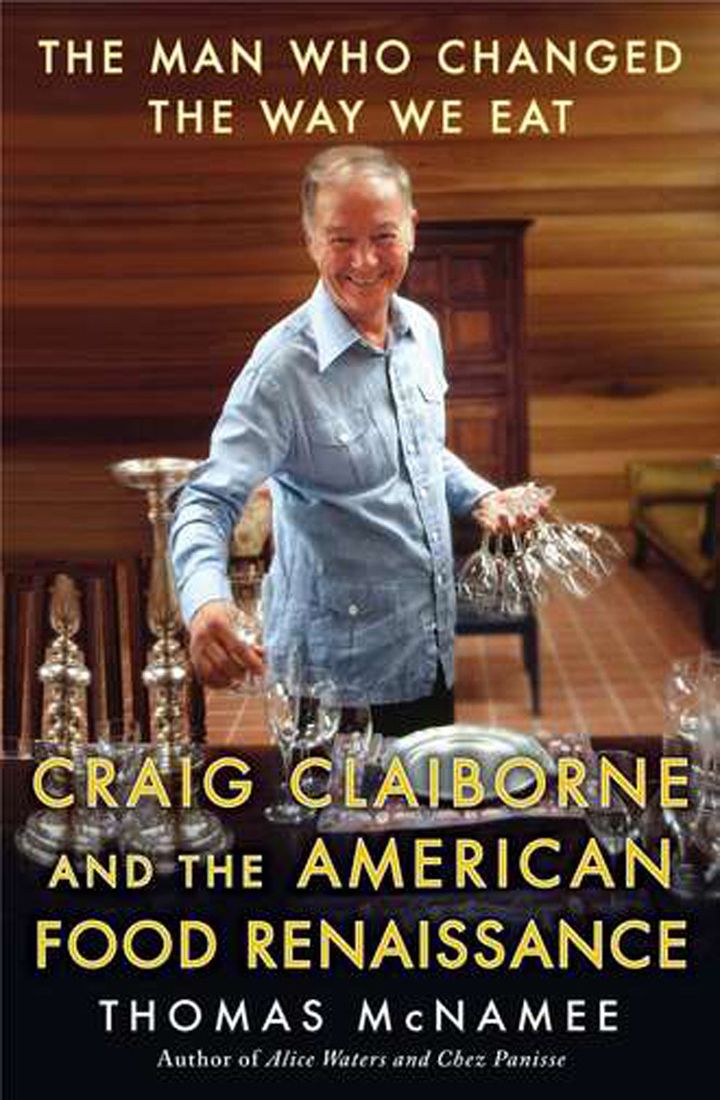
When I first started working on The Man Who Changed the Way We Eat: Craig Claiborne and the American Food Renaissance [Free Press, $27.00], I was stunned to find how many young people had no idea who he was. Even chefs. As I continued my research, two reasons stood out, both with something to say about how we construct historical memory these days: Craig was absolutely terrible on video, and he abhorred self-promotion.
Here was the early New York Times food editor who made gastronomy a respectable profession, a restaurant critic in a world that did not know the term, the guy who brought us arugula, pesto, nuoc mam, and the salad spinner (among several hundred other things we now take for granted), the man whose review of Mastering the Art of French Cooking put Julia Child on the map, who by the 1970s was the unquestioned arbiter of all things food-related in America--slipping into oblivion?
People were still cooking from Marcella Hazan's books, Diana Kennedy's, Paul Prudhomme's. Paul Bocuse, Wolfgang Puck, Alice Waters, Jacques Pépin, and the brothers Troisgros were still vivid names to anyone who knew food. We made feijoada at home, and soufflés, and pasta con le sarde. We had copper pots and semiprofessional stoves. We lived in the world Craig Claiborne had made.
Julie and Julia had just been a hit both as a book and as a movie at the time when I sold my proposal for the Claiborne biography to Free Press. Of course everybody knew and loved Julia! Everybody I knew, it seemed, could do Julia--the fluting voice, the fluttering hands. All the other food stars, too, had cultivated a public image; and the best-known among them had done it on television and video. Craig, as emperor, felt no need. When he walked into a restaurant to do his job, he did not wear a disguise. Nobody knew what he looked like.
Julia ruled the TV field alone for years, and then in the early 1980s, videocassettes of cooking demonstrations had a heyday. Craig and his longtime professional partner, Pierre Franey--probably the best chef in the country--were dragged reluctantly into the field, and in 1982 they published a book-and-video companion set called The Master Cooking Course. The cookbook is moderately useful, but as I write in my book, the video "barely rises to the level of amateurish. Craig, every word apparently scripted, sounds like a school kid reading a book report. When he's behind the typewriter or there's action on the counter, the clattering of the keys or the cookware drowns out his voice. Pierre, too far from the microphone, doesn't have much to say but when he does, he shouts. Neither of them ever cracks a smile. Neither of them ever looks at the other, or at the camera. It is absolutely terrible."
Craig made one more attempt at a cooking video, solo, and it was slightly better, but he knew he was out of his element. He did like giving talks at benefits, and so a certain number of older society folk recognized him, but other than those people and his friends almost nobody did. He published 20 cookbooks, comprising thousands of recipes, and for three decades he was the unchallenged supreme authority of the American food world, but you rarely saw his picture anywhere. His descent into alcoholism and despair late in life was, therefore, quite private. He left the Times, not voluntarily, in 1987. In 1990 he published a revised edition of his original and greatest book, The New York Times Cook Book, of 1961, and then a slim little volume on table manners. Thenceforward he was invisible.
When the James Beard Foundation--whose awards are the food world's equivalent of the Oscars--announced to Craig that he was to receive its first lifetime achievement award, he said he was busy that day. They begged. He was adamant. He did a knife sharpener demonstration at a supermarket instead.
After quadruple bypass surgery in 1993, a subsequent systemic infection, a series of strokes, and a long, slow, sinking into darkness, Craig Claiborne died in January 2000. He had, however, lived as he had wished to live, had led his fellow Americans into vast new realms of enjoyment, and had had a lot of fun along the way, his way.